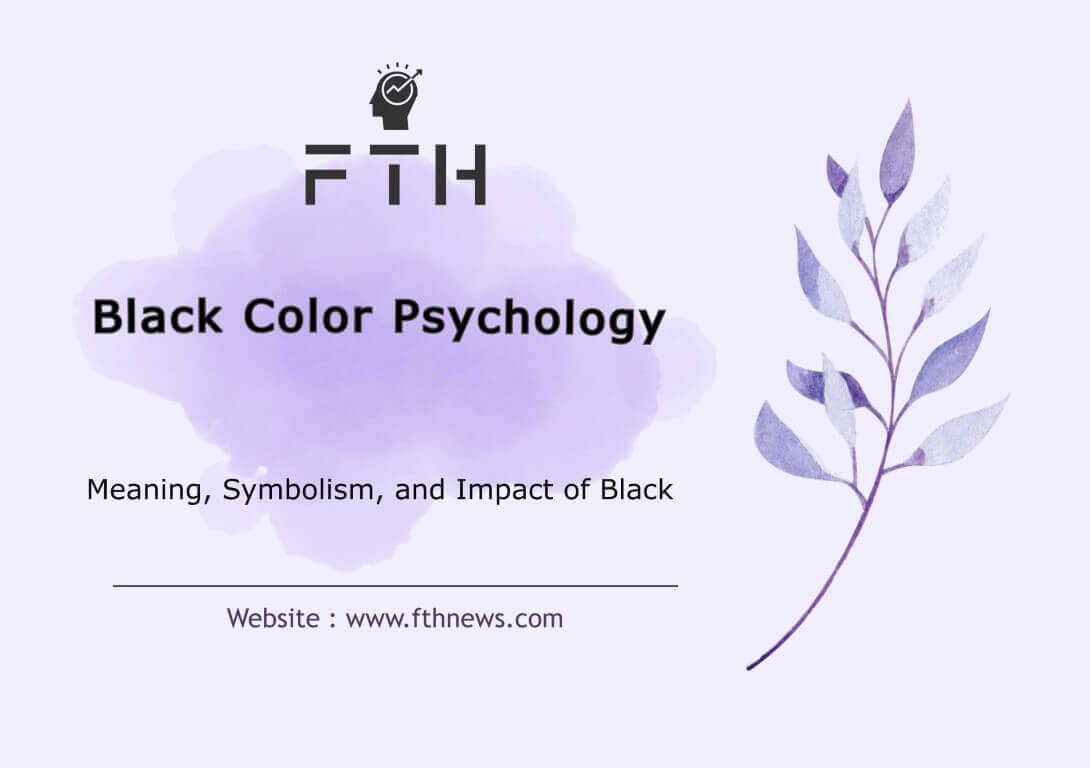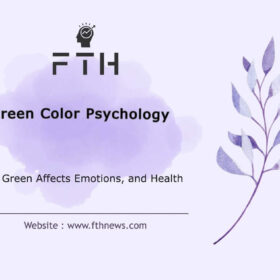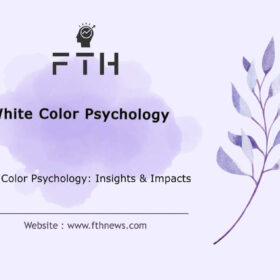
When we think of the color black, a myriad of associations may flood our minds. From the elegance of a little black dress to the solemnity of a black suit, black is a color that transcends simple definition. It is a powerful, multifaceted shade that has captivated humanity for centuries. In this blog post, we delve into the depths of black color psychology, exploring its various meanings, its impact on our emotions, and its significance across different cultures.
The Symbolism of Black Color
Black is often associated with sophistication and elegance. This association is not without merit—think of the timeless appeal of a black-tie event or the sleek design of luxury cars. The color black is a staple in high fashion, symbolizing luxury and refinement. It’s the color of choice for formal events, exuding a sense of understated opulence and class.
However, the symbolism of black extends far beyond luxury. It is also a color tied to power, authority, and control. In many professional settings, black is the go-to color for making a strong, assertive impression. This is why black is commonly used in business attire, such as suits and uniforms, where it communicates competence and confidence.
Conversely, black can evoke feelings of mystery and the unknown. It is the color of night, the backdrop to countless stories of intrigue and suspense. This connection to the mysterious can also lead to black being perceived as intimidating or even sinister. In literature and film, black is frequently used to symbolize the unknown, the hidden, and the forbidden. Characters clad in black often embody secrets and complexities, adding to the color’s enigmatic allure.
Black’s duality is part of its charm—it can signify both elegance and foreboding, power and secrecy. This complexity makes black a versatile and powerful color in both psychological and cultural contexts. Whether it is used to create a sense of formality and control or to evoke mystery and depth, black’s rich symbolism adds layers of meaning wherever it appears.
Black Color Meaning in Different Cultures
The meaning of black varies significantly across different cultures, reflecting a rich tapestry of symbolism and tradition. In Western societies, black is often linked to mourning and loss. Wearing black at funerals is a common practice, symbolizing grief and respect for the deceased. This tradition dates back to the Roman Empire and has persisted through centuries, underscoring black’s association with solemnity and reflection.
However, in other parts of the world, black can signify life and rebirth. For instance, in some African cultures, black is seen as a symbol of fertility and new beginnings. Among the Maasai of Kenya, for example, black is associated with rain clouds, which bring water and life. In these contexts, black embodies renewal and the cyclical nature of life.
In Japan, black carries both positive and negative connotations. Traditionally, black is a color of formality and elegance, often worn at significant life events, including weddings and funerals. The black kimono, particularly, symbolizes strength and sophistication. Yet, black can also represent mystery and the supernatural, reflecting its complex role in Japanese culture.
In fashion and design, black is universally revered for its versatility and timelessness. From traditional Japanese kimonos to contemporary high fashion, black remains a staple that transcends cultural boundaries. The little black dress, popularized by Coco Chanel, is a testament to black’s enduring elegance and its ability to convey a sleek, sophisticated aesthetic across the globe.
Moreover, in the corporate world, black is a color of professionalism and authority. Many global brands, such as Chanel, Nike, and Adidas, utilize black in their logos and products to convey a sense of prestige and reliability. This universal appeal makes black a powerful tool in branding and marketing, capable of resonating with diverse audiences.
Psychological Effects of Black Color
Black has a profound impact on our psychological state, evoking a wide range of emotions and reactions depending on the context in which it is used. This versatility makes black a powerful color in various aspects of life, from fashion and design to cultural practices and personal expression.
In contrast, the color green represents growth, harmony, and renewal. Exploring the psychological effects of green can provide a refreshing balance to the intensity of black. Green is often linked to nature and tranquility, offering a calming influence that can complement the sophistication of black.
Understanding these colors’ psychological effects can enrich our appreciation of their uses in design, fashion, and everyday life. While black provides depth and elegance, green brings a sense of balance and peace, illustrating how different colors can work together to create a harmonious environment.
Black Color Psychology: Power and Control
Wearing black can make individuals feel more confident and in control. This is why many uniforms, from law enforcement to corporate attire, utilize black to convey authority and professionalism. The color’s ability to enhance feelings of empowerment is backed by psychological studies that suggest people perceive those dressed in black as more competent and authoritative. Black exudes a sense of power and discipline, making it a strategic choice for those looking to assert their presence and command respect.
Protection and Comfort
Black is also a color of protection. It can create a sense of security and comfort, offering a psychological barrier against external stress. This protective quality makes black a popular choice in both fashion and interior design. In clothing, black can make the wearer feel shielded and less vulnerable, while in home decor, it can create a cozy, intimate atmosphere. The enveloping nature of black can help individuals feel grounded and safe, providing a sanctuary from the chaos of the outside world.
Black Color Psychology: Sophistication and Elegance
The elegance of black is undeniable. It is a color that can elevate any outfit or space, adding a touch of sophistication and refinement. This is why black is a favorite in the fashion industry, often associated with high-end, luxurious brands. Black’s ability to convey chic minimalism and timeless style makes it a staple in wardrobes and interior design. Whether it’s the little black dress or a sleek black sofa, this color exudes a quiet confidence and understated glamour.
Black Color Psychology: Mourning and Sadness
On the flip side, black is closely associated with mourning and sadness. Its use in funerals and memorials is a testament to its connection with loss and grief. This somber aspect of black can evoke feelings of melancholy and introspection, making it a powerful color for conveying deep, complex emotions. In these contexts, black serves as a visual representation of the weight of loss, providing a space for reflection and remembrance. The color’s depth mirrors the profundity of human emotion, capturing the essence of sorrow and contemplation.
Black Color Psychology: Mystery and Intrigue
Black’s connection to mystery and the unknown adds another layer to its psychological impact. It is the color of night, the backdrop to countless stories of intrigue and suspense. This association with the mysterious can make black feel both alluring and intimidating. In design and fashion, black can be used to create a sense of depth and complexity, drawing people in with its enigmatic appeal. The color’s ability to evoke curiosity and fascination makes it a compelling choice for those looking to add an element of intrigue to their persona or space.
In summary, black’s psychological effects are multifaceted, making it a versatile and impactful color. Whether it is used to convey power, provide comfort, express elegance, or symbolize mourning, black’s profound influence on our emotions and perceptions is undeniable.
The Versatility of Black in Design
In the world of design, black is a versatile powerhouse. Its adaptability makes it an essential tool for designers across various fields. Black can create stark contrasts, draw attention to particular elements, or provide a neutral backdrop that allows other colors to pop. Designers often use black to add depth and dimension to their work, creating visually striking compositions that are both impactful and timeless.
Fashion
In fashion, black is a constant. It is slimming, flattering, and always in style. From the iconic little black dress to the sharp black suit, this color is a wardrobe staple that can be dressed up or down for any occasion. Black’s ability to convey elegance and sophistication is unparalleled. It serves as a blank canvas that can be accessorized in countless ways, making it a favorite among fashion designers and enthusiasts alike. Additionally, black garments are practical; they do not show stains easily and can be paired with virtually any other color.
Interior Design
In interior design, black can make a bold statement or offer subtle sophistication. It can be used in various elements, from furniture to accents, to create a modern, chic look. Black walls or furnishings can add drama and elegance to a space, while black accessories can provide a touch of refinement. The strategic use of black can highlight architectural details, create focal points, and enhance the overall ambiance of a room. For instance, a black feature wall can add depth and interest without overwhelming the space.
Creating Contrast
Black is often used to create high contrast in design. Pairing black with white or other light colors can create a striking visual effect that is both modern and classic. This contrast can delineate spaces and direct the viewer’s attention to key elements of the design. In graphic design, black text on a white background is not only readable but also aesthetically pleasing, ensuring clarity and impact.
Adding Depth and Dimension
Black can add depth and dimension to both two-dimensional and three-dimensional designs. In photography and art, using black can enhance shadows and highlights, adding a sense of realism and intensity. In interiors, black elements like frames, trims, or furniture can create a layered look, adding richness and complexity to the design.
Versatility in Application
Black’s versatility extends to its application across different materials and textures. Glossy black surfaces can evoke a sense of luxury and sophistication, while matte black can provide a more understated and contemporary look. Black can be integrated into various design styles, from minimalist and industrial to traditional and eclectic, proving its universal appeal.
The versatility of black in design is undeniable. Whether in fashion, interior design, or graphic arts, black serves as a fundamental element that enhances and elevates the overall aesthetic. Its ability to create contrast, add depth, and provide a sophisticated backdrop makes black an indispensable color in the designer’s palette. By harnessing the power of black, designers can create dynamic, elegant, and timeless works that resonate across different cultures and styles.
Black Color in Personality Psychology
Black color psychology can provide fascinating insights into a person’s personality. If your favorite color is black, it may suggest several distinctive traits:
Seriousness
You approach life with a high level of seriousness and commitment. This trait means you are likely diligent, responsible, and focused on achieving your goals. You take your duties seriously and often strive for perfection in your endeavors.
Independence
Your independence is very important to you. You prefer to handle tasks on your own and rarely ask for help. This self-reliance is a core part of your identity, and you take pride in your ability to navigate challenges independently.
Intimidating Attitude
Due to your serious nature, you may come across as intimidating and unapproachable to some people. This can be a double-edged sword—while it can command respect and authority, it might also deter others from approaching you, potentially isolating you socially.
Suppressing Emotions
You might intentionally or unconsciously suppress your emotions and desires, presenting a clear and unemotional facade. This emotional restraint can protect you from vulnerability but may also lead to internal stress and a lack of genuine emotional connections with others.
Rebelliousness
A rebellious streak often characterizes those who favor black. You resist control and have a strong desire to chart your own course. This trait can drive innovation and independence but may also lead to conflict with authority figures or societal norms.
Feeling of Power
You like to feel strong, powerful, and capable. High self-esteem often stems from these qualities, as black wearers often see themselves as competent and influential. This sense of power can inspire confidence and assertiveness in various aspects of life.
Privacy
Privacy is crucial to you. You keep certain personal matters to yourself, valuing your personal space and boundaries. This trait can make you seem mysterious or secretive but is also a form of self-preservation and control over your personal narrative.
Distancing
You don’t get close to others easily and usually distance yourself to protect your personal space. This distancing can serve as a protective mechanism, allowing you to maintain control over your interactions and relationships.
Black Color in Marketing and Advertising
In the world of marketing, nothing happens by chance. Every aspect, including the choice of colors, is carefully considered to maximize impact on the consumer. Black plays a significant role in this strategic planning.
Attracting Attention
Colors in marketing are crucial for attracting attention and establishing a connection with the audience. Black, as a strong and distinctive color, evokes mystery and the need for discovery. It is often used to market high-quality and luxurious products and technologies, appealing to consumers’ desires for sophistication and exclusivity.
Creating Brand Identity
Neutral colors like black and gray are frequently used in logos and branding because they signify honesty, uniqueness, and sophistication. These colors help brands convey a sense of reliability and prestige, which can build consumer trust and loyalty. For example, many high-end fashion brands use black in their branding to symbolize elegance and timeless style.
Conclusion:
The psychology of black is as complex and intriguing as the color itself. Black embodies a spectrum of meanings, from power and sophistication to mystery and mourning. Its versatility and depth make it a timeless choice in fashion, design, and beyond.
Whether you are drawn to black for its elegance, protective qualities, or powerful presence, understanding the psychology behind this captivating color can enrich your appreciation of its many facets. Embrace the allure of black, and let it inspire you in your personal and professional endeavors.














